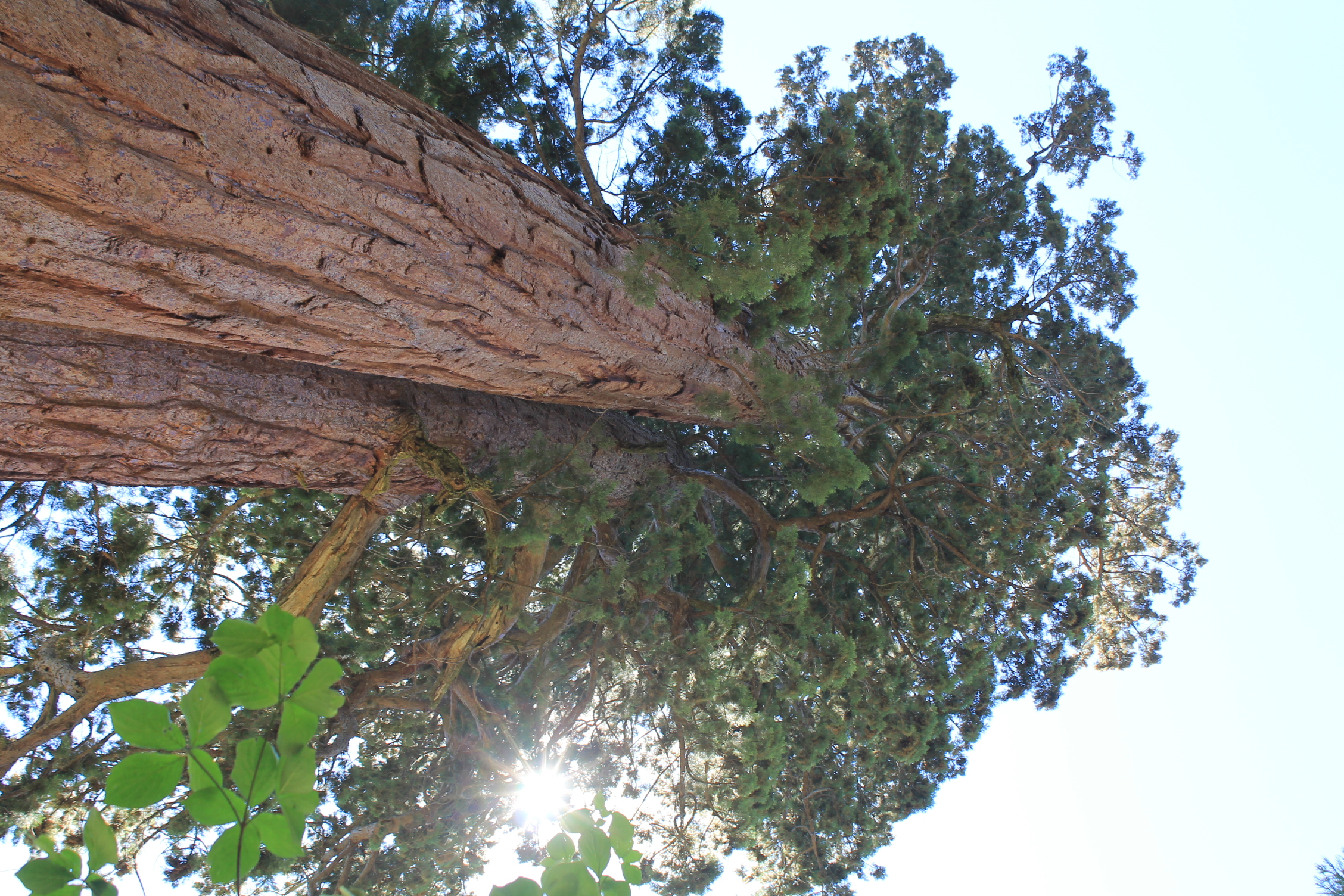
The Lesson of the Tree
There are so many Ordinary Things we can learn from, teachers beside us at every moment, that I imagine we could continue this series for a long time. For now, we’re going to end it with The Lesson of the Tree. It probably should have been called the “lessons” of the tree because there is certainly more than one!
I’d like to focus on the metaphor of the tree as Mark Nepo explains it in The Endless Practice:
The soul spreads its roots steadily into the ground of being, no matter what happens in the weather above. All the while, our limbs and leaves grow every which way, branching further into the world of relationships. The practice of being human is staying alive to both: the ground of being that pulls our roots to lengthen and the weather of life that swirls our leaves… Appealing as it is, we can’t complete ourselves by retreating into the dark stability of our roots alone. Each of us sways in the storm of the world, while the roots of eternity spread in us and grow. Our job is not to deny any of the journey… Like everyone before me, I endure the distortions of being human while trying not to turn them into intractable beliefs. I really want to trust all this, the way a tree trusts the Earth and Sky it grows between.
What if we are like the tree? Our limbs and leaves branch into the world with our myriad of relationships and experiences. We venture forth into jobs and friendships, partnerships, parenthood, homes, vacations. But then the winds of life kick up and we experience change, illness, pain, loss, danger, death, divorce, and so much more. Frankly, even good change can stir up a windstorm of chaos and challenges.
If we don’t learn to bend with the storm, we’re going to break; and, if we’re not held firmly to the ground, we’re going to go over. Our family, friends, faith, community, inner strength and spirituality, love and more become the root system that anchors us when life threatens to topple us over.
Did you know that trees begin their growth with a taproot which provides stability and access to water and nutrients. As they grow, lateral roots grow outward near the surface and become the more dominant root system. These lateral roots typically spread horizontally at least twice as far as the tree’s crown, sometimes four to seven times the size of the crown.
The questions become, how well do we bend, and how far do our roots spread?
But here’s the part of what Mark Nepo wrote that has been nagging at me: I really want to trust all this, the way a tree trusts the Earth and Sky it grows between.
Trust… do we trust life the way a tree trusts the Earth and Sky it grows between? And by this I don’t mean that we believe nothing bad or difficult will ever happen – that would be naïve. But do we trust life enough to allow ourselves to sway and bend with the wind? Do we trust our roots enough to know that they will hold us in the really big storms?
We tend to rely heavily on our lateral roots, the relationships that sustain us. Hopefully we all have folks who will be there if we call, and even if we don’t call. But these roots can also be easily broken by betrayal, criticism, conflict, differences of opinion, lack of support or understanding.
My wife, Julie, has been going through a lot of physical challenges these days. Just this week she looked at me and thanked me for being so understanding and supportive of her through all of this. I’m pretty sure I looked at her funny and responded something like, “well, I’m sure I can’t really understand the pain, but I try, and, of course I support you… why wouldn’t I? That’s what we do.”
But then she explained that she’s never had someone close to her who was ever remotely empathetic or who tried to understand when she was in great amounts of pain.
With me, and others, walking by her side, it was easier for her to trust her ability to bend with these latest storms. Her root system is grounded in people she can trust.
But we still need our taproot, that thick, strong root at the center of our root system - a deep spiritual connection to something vast, sacred and eternal.
A few weeks ago I was asked to bless the ashes of a young woman from a previous church who passed away of cancer at the age of 36. Neither she nor her family had been to church in a very long time and yet it was part of her final wishes that her ashes be blessed. Church or no church, she clearly had her taproot intact. It was nourishing her even as she drew close to death, a deeply sacred and holy time. It helped sustain her attitude, her love, her perspective, her trust in life and death, and I believe it gave her the wisdom to be able to extend that nourishment to her family through the blessing of her ashes.
Jack Kornfield tells a story about working with combat veterans returning from active duty and other men who had experienced violent trauma. Together with a few colleagues, he helped create retreats in a lodge deep in the redwood forest. There the men were free to share all that had happened to them, all they had done, all their dreams and hopes, fears and nightmares. Together they learned the myths and songs of returning warriors – African, Mayan, Irish, Tibetan – which called out for mercy, understanding and solace. Each evening the old stone lodge was lit with candles and the men were invited to share their stories.
One night TJ, the youngest one there, described a scene from his time in an LA street gang and a drive-by shooting just the week prior. When the shooting started TJ had run, but his younger friend was too slow and was hit and killed. TJ ran back to hold his friend, fending off the police when they arrived. As he cried over his friend that night, he wondered whether he could have done anything more to save his friend.
As he wept in the telling, Rudy, a big, burly ex-Marine recently returned from Iraq, came to his side, put a tattooed arm on TJ’s shoulder, and told TJ that he did the right thing. When the shooting starts, you run, but you never leave your man.
Then Rudy talked about a tragic incident in Iraq where he was guarding a checkpoint at twilight. A group of Iraqi civilians approached, and he ordered them to stop for a search, as there had been recent suicide bombings. One older man just continued walking. Rudy shouted for him to stop in both English and Arabic, but he kept walking. Rudy opened fire and the man fell. The Iraqi women in the group began screaming and shouting. A translator said to Rudy, “Couldn’t you tell? The old man was deaf.”
Rudy and TJ cried together and the slowly, under the candlelight deep in the redwoods, the 100 or so men stood up and began to sing the haunting melody of African warriors returning home. For a half an hour they surrounded Rudy and TJ with their deep, beautiful, sorrowful voices, little by little singing them back to themselves.
Rudy now works in a project mentoring young men who are leaving the gang life. (Kornfield, No Time Like the Present, p. 48-49)
That night, those men were the epitome of the strength of the Redwoods they stood under. While Redwoods are the largest of trees, they have a surprisingly shallow, though expansive, root system that spreads outwards rather than downwards. This shallow root system, typically 6-12 feet deep, can extend up to 100 feet or more from the base of the tree. So, Redwoods need to grow in groves or forests because they rely on the interconnectedness and intertwining of their roots with other trees to help them weather the storms.
May we not lose sight of our roots, not neglect our friendships and communities, not drift away from our spiritual lives. May we nurture all of it that we might stand strong, and sway freely, trusting life the way the tree trusts the earth and sky it grows between.
Love & Light!
Kaye



